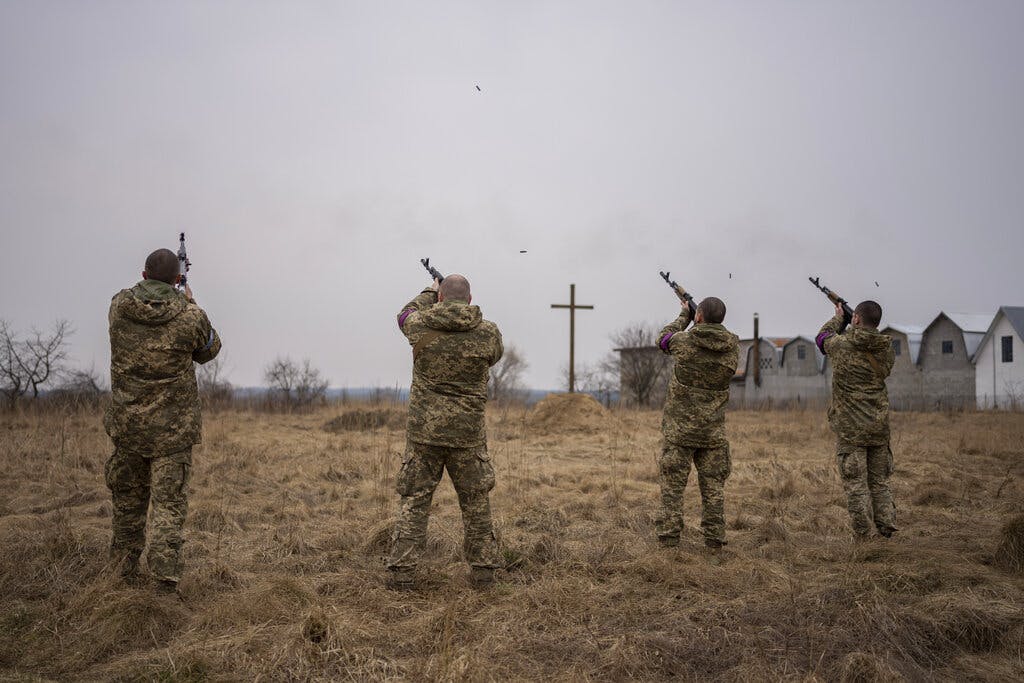British Weapon Makes Ukraine Airspace More Dangerous for Russia
The abducted Melitopol mayor, Ivan Fedorov, was released in a prisoner exchange that included the return of nine Russian soldiers from Ukrainian captivity.

Starstreak Power
The inability of the Russian military to attain air superiority in the skies above Ukraine has been the subject of much speculation by military analysts since the war began, and it’s only going to get tougher for Russian combat aircrew due to Britain’s decision to supply Ukraine with Starstreak anti-aircraft missiles.
That’s because the British-designed Starstreak is a more modern and effective anti-aircraft weapon than its American equivalent, the Stinger. The Starstreak is faster than the Stinger (Mach 4 vs Mach 2.5) and can strike targets at an altitude of 23,000 feet, versus the Stinger’s operational ceiling of 15,700 feet. The Starstreak also has a superior guidance system that’s more accurate and has better immunity to countermeasures.
Hit ’em Where it Hurts
It turns out Russian aircraft are vulnerable to Ukrainian attack even when parked on tarmacs. Satellite imagery released on March 16 by the Ukrainian military shows thick plumes of smoke rising from burning helicopters, utility vehicles, and buildings at a forward Russian airbase established at Kherson International Airport. Kherson was captured by the Russian army on March 4. It’s unclear at this time whether the Russian airbase was hit by artillery, air strikes, or a raid by special forces units of the Ukrainian military.
Sitzkreig
The Russians are making little discernible progress in their efforts to capture and/or encircle the Ukrainian capital of Kiev. There has been sporadic fighting at the city’s northwest outskirts and Russian armored columns to its west and east are seemingly static. It’s likely that this failure/inability to maneuver is due, at least in part, to logistical shortages inflicted by Ukrainian attacks against Russian supply lines.
Russian forces have likewise failed to make any substantial gains in their assault against Ukraine’s second-largest city, Kharkiv.
The only sector where the Russian army appears to be on the move is around the town of Izyum north of the pro-Putin breakaway province of Luhansk in eastern Ukraine. Russian territorial gains in this area threaten the flank of Ukrainian forces in the country’s southeast and may force a strategic Ukrainian withdrawal from the Donbass region.
Free at Last
The abducted Melitopol mayor, Ivan Fedorov, was released in a prisoner exchange that included the return of nine Russian soldiers from Ukrainian captivity. Mr. Federov’s release was confirmed by the office of President Putin without additional comment.
The Ukrainian government last week released CCTV footage of Russian troops frog-marching Mr. Federov into captivity. The following day, the Russian army installed a pro-Putin puppet at City Hall who proceeded to advise residents that they should accept their “new reality.”
The citizens of Melitopol were disinclined to cooperate, instead assembling by the thousands in the streets, where they conducted a spontaneous protest rally in defiance of their Russian occupiers.
President Zelenesky’s office said the Russian prisoners exchanged in the swap were all 19 and 20 years old. “These are actually children,” a Ukrainian press aide said, raising further questions about Mr. Putin’s deployment of conscripts to a foreign war zone in violation of Russian law.
All’s Not Quiet on the Home Front
Media can’t get more mainstream in Russia than Channel One, the first TV network to go live after the collapse of the Soviet Union.
Viewers of Channel One’s popular evening news broadcast on March 14 were surprised to see a woman dash onto the set carrying a placard that read, “Stop the war. Don’t believe the propaganda. They’re lying to you.”
The culprit/heroine was a 43-year-old producer at the state-owned network, Marina Ovsyannikova, who was promptly arrested by Russian police. She left behind a pre-recorded video message in which she apologized for “doing Kremlin propaganda” that helped “the Russian people to be zombified.”
Ms. Ovsyannikova’s display of agit-prop civil disobedience earned her a night in jail and a 30,000 ruble fine for the amorphous offense of “organizing unsanctioned actions.”
It would be advisable Ms. Ovsyannikova to postpone paying her fine until the last possible moment because the dizzying depreciation of the ruble means her penalty is getting cheaper by the day.
Pentagonal Politics
Meanwhile on the banks of the Potomac, the U.S. Marine Corps commandant, General David Berger, cited the woes of Russian armor in Ukraine to justify his decision to rid the Corps of its M1A1 Abrams tanks.
“Tanks did tremendous work for us for many years in many different scenarios,” General Berger said in an interview with the Washington Post. “Going forward, they are heavier, too difficult to logistically support, and in some cases too vulnerable to attack from a proliferation of very inexpensive missiles.
Needless to say, the U.S. Army disagrees.

